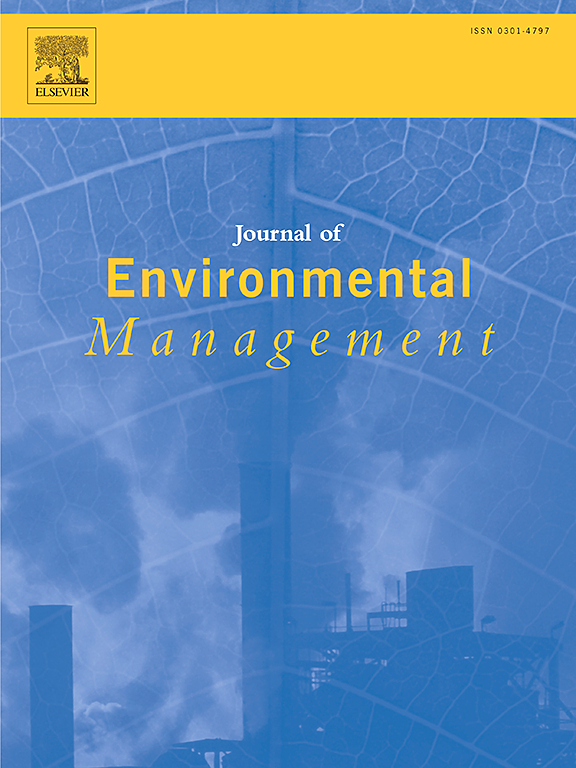揭示夏季多雨地区城市降雨化学——基于两个雨季观测的大气污染物变化及来源识别
IF 8
2区 环境科学与生态学
Q1 ENVIRONMENTAL SCIENCES
引用次数: 0
摘要
降雨化学是反映空气质量人为/自然输入的重要指标,降雨过程是大气污染物的主要汇,引起了社会各界的广泛关注。通过降雨沉积的化学成分主要发生在雨季,在中国一般为夏季,贡献了大部分的大气污染汇。本文在中国西南部一个典型的夏季多雨城市进行了两次基于雨季的观测,以阐明雨水化学的变化、控制和来源。主要离子为SO42−、NO3−、Ca2+和NH4+, VWM浓度(μeq/L)为SO42−>;3号−祝辞F−祝辞在两个雨季(2022年和2023年)阴离子Cl−,而Ca2+ >;NH4 +比;Mg2 +比;Na +比;K+和NH4+ >;Ca2 +的在Mg2 +比;Na +比;2023年的假期是K+。雨季降雨量大是影响雨水离子浓度的主要因素,大气污染物也起着不可忽视的作用。此外,一些元素(如Ca和Mg)可以在非雨天期间在大气中积累,因此干旱天数通过随后的降雨改变了雨水离子浓度。通过化学计量分析和正矩阵分解确定,雨水中NH4+的30.3%、NO3−的68.6%和SO42−的50.8%来自城市废弃物挥发和燃烧排放等人为来源。大气尘埃和颗粒物是雨水Ca2+(50.4%)和Mg2+(43.7%)的主要贡献者,SO42−(49.2%)、NO3−(22.3%)和K+(19.3%)的主要贡献者。海洋输入是Cl−(56%)、Na+(77.7%)和Mg2+(33.1%)的主要来源。本研究阐明了夏季多雨地区降雨化学特征及其来源,为应对气候变化的可持续城市规划提供了有价值的见解。本文章由计算机程序翻译,如有差异,请以英文原文为准。

Unveiling the urban rainfall chemistry in summer frequent-rainy area: Variation and source identification of air pollutants based on two rainy seasons’ observation
Rainfall chemistry is a significant indicator of anthropogenic/natural inputs to air quality, and the rainfall process serves as a major sink for atmospheric pollutants, attracting widespread attention from community. The chemical components deposited via rainfall mainly occur in the rainy season, generally summer in China, contributing to the majority of air pollution sink. Here, two rainy seasons-based observation were conducted in a typical summer-frequent-rainfall city in southwestern China, to clarify the variations, controls, and sources of rainwater chemistry. The major ions were SO42−, NO3−, Ca2+ and NH4+, with the VWM concentration (in μeq/L) of SO42− > NO3− > F− > Cl− for anions in two rainy seasons (2022 and 2023), while Ca2+ > NH4+ > Mg2+ > Na+ > K+ in 2022 and NH4+ > Ca2+ > Mg2+ > Na+ > K+ in 2023 for cations. High rainfall amount in rainy season was the main factor influencing the rainwater ion concentration, while air pollutants also played a non-negligible role. Additionally, some elements (e.g., Ca and Mg) can be accumulated in the atmosphere during the non-rainy days, and the number of dry days thus alters the rainwater ion concentration by the subsequent rainfall. Source apportionment by stoichiometric analysis and positive matrix factorization confirmed that the human-induced sources, including urban waste volatilization and combustion-related emissions, were responsible for 30.3 % of NH4+, 68.6 % of NO3−, and 50.8 % of SO42− in rainwater. Atmospheric dust and particles were the dominant contributors to the rainwater Ca2+ (50.4 %) and Mg2+ (43.7 %), and the substantial contributor to SO42− (49.2 %), NO3− (22.3 %), and K+ (19.3 %). Marine inputs were the primary source of Cl− (56 %), Na+ (77.7 %), and Mg2+ (33.1 %). This study elucidated the rainfall chemical features and their sources in summer-frequent rainy area, offering valuable insights for sustainable urban planning in response to climate change.
求助全文
通过发布文献求助,成功后即可免费获取论文全文。
去求助
来源期刊

Journal of Environmental Management
环境科学-环境科学
CiteScore
13.70
自引率
5.70%
发文量
2477
审稿时长
84 days
期刊介绍:
The Journal of Environmental Management is a journal for the publication of peer reviewed, original research for all aspects of management and the managed use of the environment, both natural and man-made.Critical review articles are also welcome; submission of these is strongly encouraged.
 求助内容:
求助内容: 应助结果提醒方式:
应助结果提醒方式:


